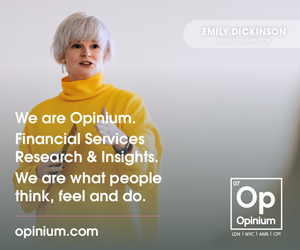Digital transformation strategies
Emerging technologies like blockchain and tokenisation, as well as Generative Artificial Intelligence (GenAI), are beginning to coalesce in investment institutions’ digital transformation strategies. The operational impact of Distributed Ledger Technology (DLT) and AI is now being seen not just in investment operations, but across a range of financial services firm corporate functions.
And the future potential of quantum computing is being acknowledged, with firms beginning to pay serious heed to its implications for their organisations.
All of these trends come through strongly in the third annual State Street Digital Assets and Emerging Technology Study, which will be published in full next month. The study is based on a global survey of more than 300 investment institutions, including traditional and alternative asset managers, non-profit asset owners, and insurance companies.
Adoption across insurers
The first thing to note is that insurers are wholesale adopters of Digital Transformation Strategies (DTS), defined for respondents as:
“Greater use of existing and advanced/emerging technologies to automate manual processes and remove manual/physical touchpoints and frictions from automated ones, in order to improve process efficiency and interoperability across core operations.”
No respondents to the survey said they had no plans to enact such a strategy, and only 20% were in the beginning stages of doing so. More than half (53%) said they were “moderately advanced” in their DTS, and more than a quarter (28%) were “extremely advanced”, with “high levels of automation, low friction, and interoperability across all or most of our core operations.”
Blockchain beyond investments
Emerging technologies are core to these strategies, both in standalone use cases and in conjunction with one another. For example, blockchain was “integral” to these strategies for 43% of respondents, part of them for 18%, and a separate part of their tech approaches for just 10%.
And this use of blockchain extends beyond core investment businesses to wider corporate operations. Majorities of respondents (68% in both instances) were either using or exploring the use of blockchain for:
- “Non-investment operations related cashflow and cash holdings”
- “Non-investment operations related business data management”
Exactly a quarter were using or looking at blockchain for other business functions such as legal contracts and regulatory compliance.
Generative AI adoption
GenAI also featured in several investment use cases. Substantial majorities of insurer respondents reported beneficial impacts in risk management (88%), front-to-back office interoperability (85%), and portfolio analysis (80%).
“Recent and sudden advances in generative AI will complement/speed up the development of digital as GenAI tools will be able to create blockchains, smart contracts and tokens, and provide other digital/tokenisation services more cheaply, quickly, and securely.”
38% of respondents agreed with this statement, while just 33% disagreed.
DLT, quantum computing, and the future
Looking further down the line, 43% agreed with a similar statement regarding the complementary nature of DLT and quantum computing, with just 28% in disagreement.
The rapid pace of advancement in all of these technologies means organisations’ digital transformation must also be constantly adapting to keep pace. If the State Street research is anything to go by, the insurance industry is currently meeting this challenge.
The full 2025 State Street Digital Assets Study is available at www.statestreet.com
James Redgrave is vice president, global thought leadership and editorial at State Street.



